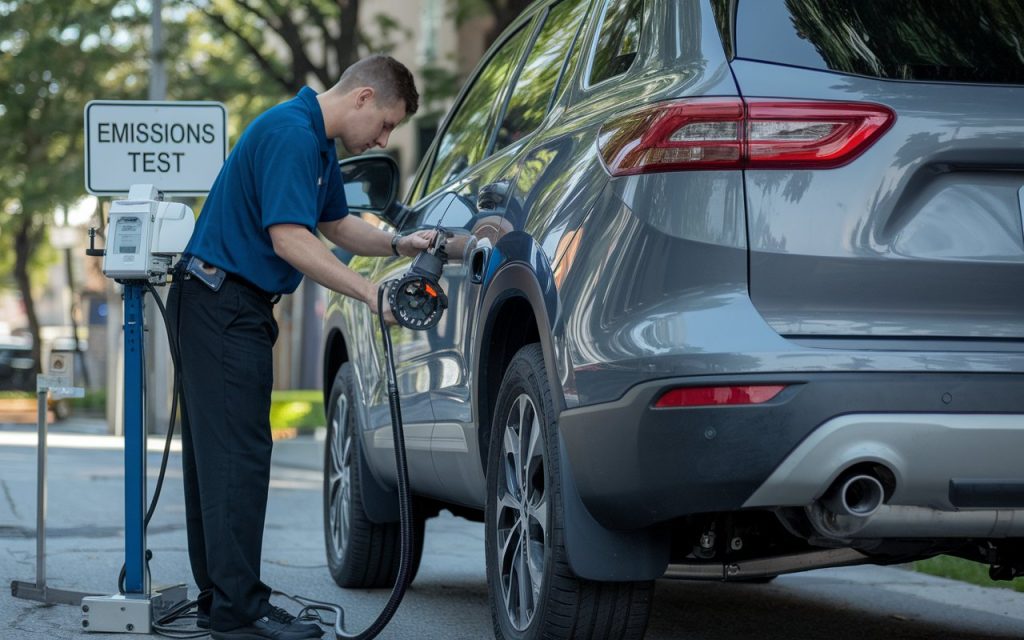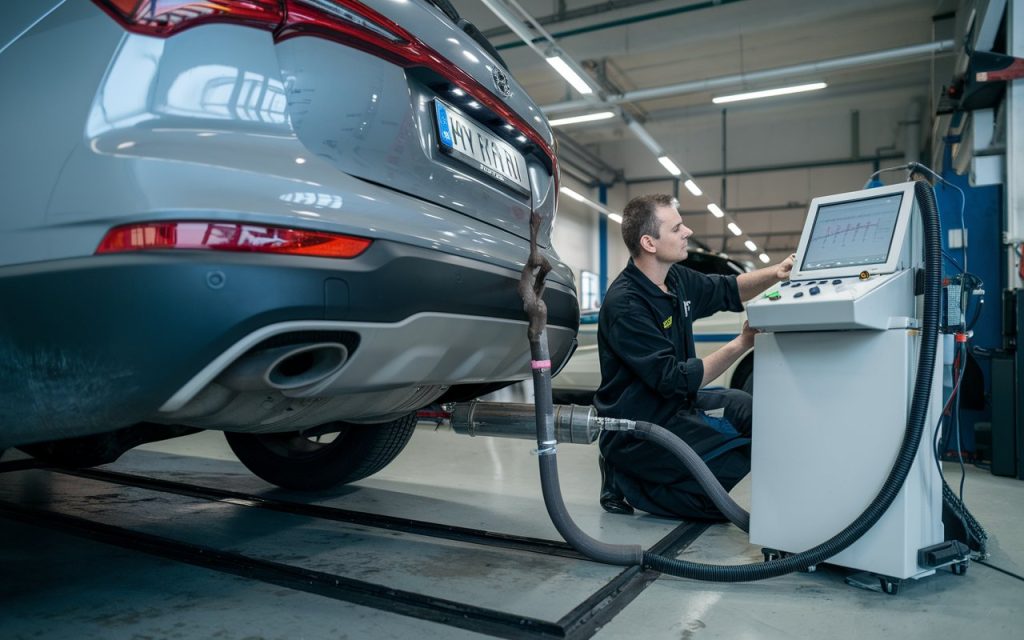Table of Contents
Have you ever wondered how long an emissions test takes? You’re not alone. Many drivers ask this question, especially when it’s time for their vehicle inspection. Knowing what to expect can help ease the process and ensure you’re prepared for your next visit to the testing station. In this article, we’ll break down everything you need about emissions tests, how long they typically take, and what factors might affect the time.
What is an emissions test?

An emissions test measures the pollutants your vehicle releases into the environment. These tests are crucial for ensuring that cars are not producing excessive harmful emissions like carbon monoxide, nitrogen oxides, and hydrocarbons, contributing to air pollution. Passing an emissions test requires renewing your vehicle’s registration in many places. But the big question is, how long does an emissions test take?
How long does an emissions test take?
The time to complete an emissions test can vary depending on several factors. On average, how long does an emissions test take? Typically, most emissions tests take anywhere from 15 to 30 minutes. This includes the time spent waiting in line, depending on how busy the testing center is, and the actual test time.
However, if you visit a testing station during peak hours, the process may take longer due to longer wait times. Let’s break down some factors impacting the length of your emissions test.
Factors That Affect How Long an Emissions Test Takes
- Time of Day
- It may take longer if you visit the emissions testing center during a busy time, such as lunch hours or weekends. To save time, try going early in the morning or on weekdays.
- Location
- Some states have busier testing stations than others. If you live in an area with higher traffic or stricter regulations, you might experience longer wait times.
- Type of Vehicle
- Your vehicle type can also influence how long your emissions test takes. Newer vehicles often go through testing faster because they are less likely to have emission-related issues, while older vehicles may require more thorough checks.
- Testing Method
- Different emissions testing methods exist, such as the on-board diagnostic (OBD) system check and the tailpipe test. OBD testing, typical for newer vehicles, usually takes less time. The tailpipe test measures pollutants directly from the exhaust and can take a few extra minutes.
What to Expect During an Emissions Test
Understanding what happens during an emissions test can help you feel more prepared and at ease. Let’s take a quick look at the steps involved so you know what to expect when you get to the testing center.
- Arrival at the Test Station
- When you arrive, you’ll likely be asked to provide your registration and proof of insurance. After checking your documents, a technician will guide your vehicle to the testing area. This part of the process usually takes about 5-10 minutes.
- The Testing Process
- The emissions test can take 10 to 20 minutes, depending on the method used. If your vehicle has an OBD system, the technician will plug a device into your car’s diagnostic port to read data from your engine. This type of test is quick and can be completed in about 10 minutes.
- The tailpipe test is conducted for older vehicles or in cases where an OBD test isn’t possible. The technician will probe your car’s exhaust pipe to measure the released emissions. This method can take a little longer, closer to 15-20 minutes.
- Receiving Your Results
- After the test, the technician will provide you with the results. If your vehicle passes, you’re good to go. If it doesn’t, they’ll inform you of any issues that need to be addressed before you can pass.
How to Prepare for an Emissions Test

Although emissions tests are usually quick and straightforward, preparing ahead can help ensure your test goes smoothly and doesn’t take longer than necessary. Here are a few tips to help you pass the test quickly:
- Warm Up Your Engine: Driving your car before the test helps the engine reach the optimal temperature, improving your chances of passing.
- Perform Routine Maintenance: Make sure your vehicle is maintained correctly. Tire pressure checks, air filter replacements, and oil changes can significantly impact the situation.
- Check the Check Engine Light: If your check engine light is on, you will likely fail the test. Be sure to address any issues before heading to the testing center.
What Happens if You Fail the Emissions Test?
Take your time with the emissions test. In most cases, you’ll receive a report explaining why the vehicle failed and what needs to be fixed. Common reasons for failing include malfunctioning oxygen sensors, faulty catalytic converters, or the presence of engine misfires. Once you’ve made the necessary repairs, you can retest your vehicle. Retesting is often quicker than the initial test and is typically offered at a discounted rate.
How Often Do You Need an Emissions Test?
The frequency of emissions testing varies depending on where you live and the age of your vehicle. In many states, you must test your truck every one to two years. However, newer cars may be exempt from testing for the first few years. Be sure to check your local regulations to comply and avoid any penalties.
Also read: How Long Does Asphalt Take to Dry? Find Out the Amazing Time.
So, how long does an emissions test take? In most cases, you can expect to be in and out of the testing center within 15 to 30 minutes. Preparing and visiting the station during non-peak hours can keep the process quick and hassle-free. Whether driving a new or older car, being ready for your emissions test will save you time and ensure your vehicle stays compliant with local regulations.




